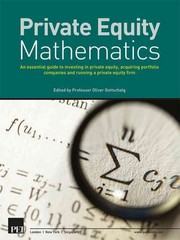Question
Help me . Please do not answer if you just answer 1 question. Thank you so much 1. In which case will an investor receive
Help me . Please do not answer if you just answer 1 question. Thank you so much
1. In which case will an investor receive the most interest:
a. 10%, compounded annually. b. 10%, compounded monthly. c. 10%, compounded continuously. d. 10%, compounded daily. e. There is not enough information provided to correctly answer this question
2. An annuity is:
a. a stream of equal payments at unequal time intervals.
b. a stream of equal payments at equal time intervals.
c. a stream of equal payments that continue forever.
d. all of the above.
e. none of the above.
3. A perpetuity is:
a. a stream of equal payments at unequal time intervals.
b. a stream of equal payments at equal time intervals.
c. a stream of equal payments that continue forever.
d. all of the above.
e. none of the above.
4. The basic rule of the time value of money (assuming positive interest rates) is:
a. investments will always be worth more tomorrow than they are today.
b. its always wiser to save a dollar for tomorrow than to spend it today.
c. a dollar in hand today is worth more than a dollar promised at some time in the future.
d. All of the statements above express an aspect of the basic rule of time value of money.
e. None of the statements above represent the basic rule of the time value of money.
5. The present value of a future amount (assuming positive interest rates and a time difference between the present and the future):
a. will always be less than the future amount.
b. can be calculated precisely if the discount rate and number of periods is known.
c. is greater than the future value.
d. both a. and b. above are true.
e. None of the statements above are correct
6. In 2 years you are to receive $10,000. If the interest rate were to suddenly decrease, the present value of that future amount to you would __________.
a. fall
b. rise
c. remain unchanged
d. The correct answer cannot be determined without more information
7. Assume that the interest rate is greater than zero. Which of the following cash-inflow streams totaling $1,500 would you prefer? The cash flows are listed in order for Year 1, Year 2, and Year 3 respectively.
a. $700 in Year 1; $500 in Year 2; $300 in Year 3
b. $300 in Year 1; $500 in Year 2; $700 in Year 3
c. $500 in Year 1; $500 in Year 2; $500 in Year 3
d. Any of the above, since they each sum to $1,500
8. Assume that the interest rate is equal to zero (i.e., 0%). Which of the following cash-inflow streams totaling $1,500 would you prefer? The cash flows are listed in order for Year 1, Year 2, and Year 3 respectively.
a. $700 in Year 1; $500 in Year 2; $300 in Year 3
b. $300 in Year 1; $500 in Year 2; $700 in Year 3
c. $500 in Year 1; $500 in Year 2; $500 in Year 3
d. Any of the above, since they each sum to $1,500.
Step by Step Solution
There are 3 Steps involved in it
Step: 1

Get Instant Access to Expert-Tailored Solutions
See step-by-step solutions with expert insights and AI powered tools for academic success
Step: 2

Step: 3

Ace Your Homework with AI
Get the answers you need in no time with our AI-driven, step-by-step assistance
Get Started


